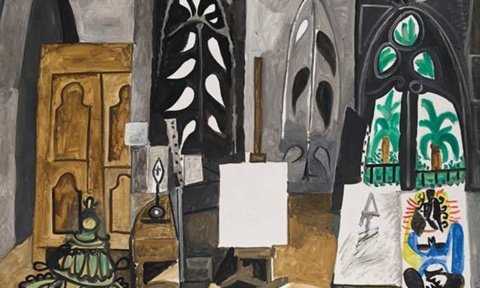Exciting times are ahead for the art world as the Stapflehus art gallery prepares for a unique experiment. Patrick Lützelschwab, the gallery’s head for just under a year, aims to showcase the capabilities and limitations of Artificial Intelligence (AI) in the realm of art curation.
The upcoming Regional Exhibition will witness an unprecedented collaboration between human and machine creativity, as AI will not only select artworks for the display but will also manage the advertising aspects. Embracing technology, Lützelschwab enthusiastically anticipates the integration of intelligent algorithms in the creative process.
However, this initiative isn’t about making the curator’s role obsolete. On the contrary, Lützelschwab sees this endeavor as an augmentation rather than a replacement of human expertise. Through this, he aims to explore how AI can expand the ways in which art is experienced and understood.
This leap into technological advancement highlights an interesting phase for art enthusiasts and experts alike, hinting at how the future of art exhibitions might evolve with AI as a creative partner. The Stapflehus exhibition is set to become a landmark event, blending traditional art with cutting-edge technology to offer a new perspective on what art curation might entail in the years ahead.
Important Questions and Answers:
Q: What exactly does AI curation involve in the context of the Stapflehus art gallery?
A: AI curation at Stapflehus involves using artificial intelligence algorithms to select artworks for exhibition and to manage advertising aspects. The AI evaluates art based on parameters like historical significance, technique, style, and possibly viewer reactions to curate a cohesive and meaningful display.
Q: How is AI integration in art curation received by the art community?
A: Opinions are varied within the art community. While some view it as an exciting opportunity to explore new territories of curation and audience interaction, others are skeptical about the loss of human touch and expertise in the process. Yet, many agree that AI could broaden the scope of art analysis and audience engagement.
Key Challenges or Controversies:
– Authenticity of Experience: Skeptics question whether an AI-curated exhibition can provide the same depth of story and context that a human curator offers, which is an integral part of the art experience.
– Creative Limitations: AI operates based on data; it lacks human intuition and emotion, which are often essential in the creative process of arranging art.
– Ethical Considerations: There are concerns about data privacy and biases that AI might perpetuate or introduce into the art world, as algorithms can be influenced by the datasets on which they were trained.
– Job Replacement Fears: Some fear that AI might encroach on jobs held by human curators, although in the case of Stapflehus, it is positioned as an augmenting tool, not a substitute.
Advantages and Disadvantages:
Advantages:
– AI can analyze vast quantities of data quickly, providing insights that might take humans much longer to compile.
– AI can introduce novel perspectives and potentially democratize art curation by minimizing subjective human biases.
– AI-driven curation may attract new audiences through the use of technology and innovative exhibition techniques.
Disperments:
– AI lacks the personal touch, context, and emotional nuance that human curators bring to art selection and arrangement.
– The use of AI in art curation could lead to a homogenization of art if it relies too heavily on popular or commonly accepted aesthetics derived from data trends.
– There may be resistance from traditionalists within the art world who value human expertise and personal connections in creating art exhibitions.
For those interested in exploring more about artificial intelligence and art, consider visiting these domains:
– The Metropolitan Museum of Art
– The Museum of Modern Art
– Tate
These websites could provide additional insights into how technology interfaces with art and possibly what other institutions think about the integration of AI in artistic endeavors.

